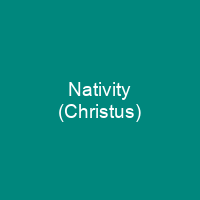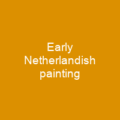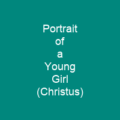The Nativity is a devotional mid-1450s oil-on-wood panel painting by the Early Netherlandish painter Petrus Christus. It shows a nativity scene with grisaille archways and trompe-l’œil sculptured reliefs. Christus was influenced by the first generation of Netherlandish artists, especially Jan van Eyck and Rogier van der Weyden.
About Nativity (Christus) in brief

They gaze reverently at the newborn figure of Jesus who lies on the ground. Behind them is a crumbling wall with three Romanesque windows with three low, amiably amiably looking into the shed. Animals are chatting against the wall, leaning into the wall of the shed, and four small angels are visible in small stalls in the back. The Fall of Man is shown in six scenes from the Book of Genesis within the archivolt,rendered in relief. Two are ofAdam and Eve; their expulsion from paradise and Adam tilling the soil. The others are of Cain and Abel: their sacrifice to God; Cain slaying Abel; God appearing to Abel; Cain expelled to the Land of Nod. The figures in the archway depict biblical scenes of sin and punishment, signaling the advent of Christ’s sacrifice, with an over-reaching message of the “Fall and Redemption of humankind”. Inside the archways, surrounded by four angels, is the Holy Family; beyond, a landscape extends into the far background. It is one of Christus’s most important works. The distinction between the figures and the space around them is characteristic in the one-point perspective, as is its bold use of color. The painting is reflective of the 14th-century Devotio Moderna movement, and contains complex Christian symbolism, subtly juxtaposing Old and New Testament iconography. The overall atmosphere is one of simplicity, serenity and understated sophistication.
You want to know more about Nativity (Christus)?
This page is based on the article Nativity (Christus) published in Wikipedia (as of Nov. 04, 2020) and was automatically summarized using artificial intelligence.







